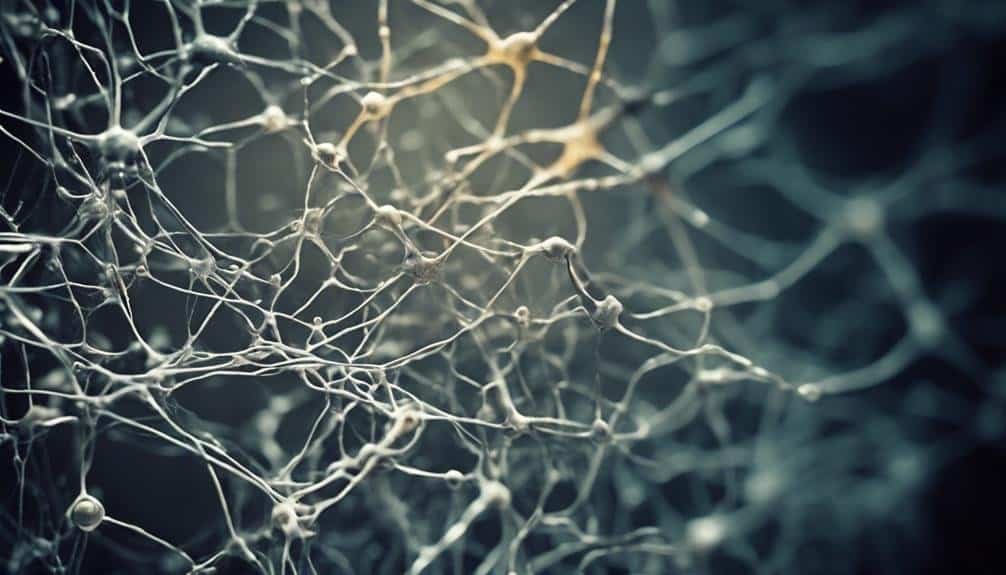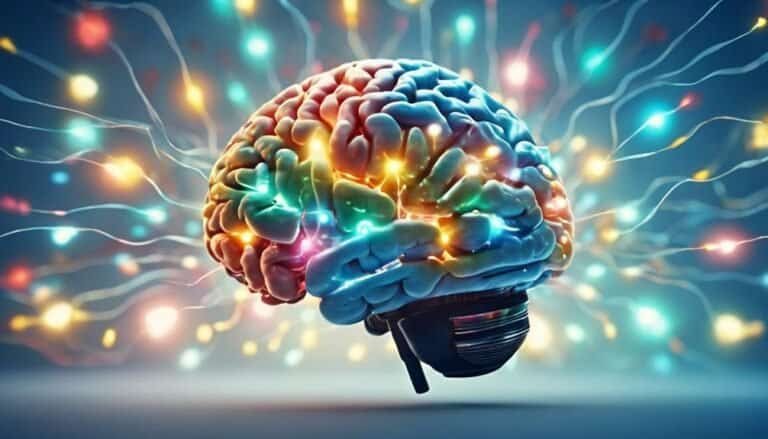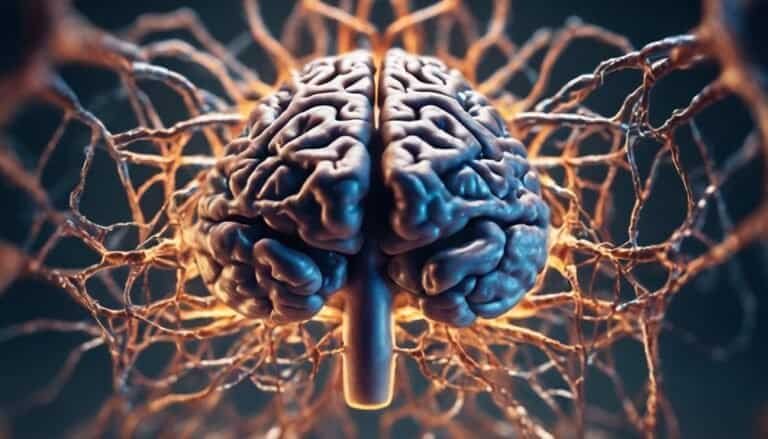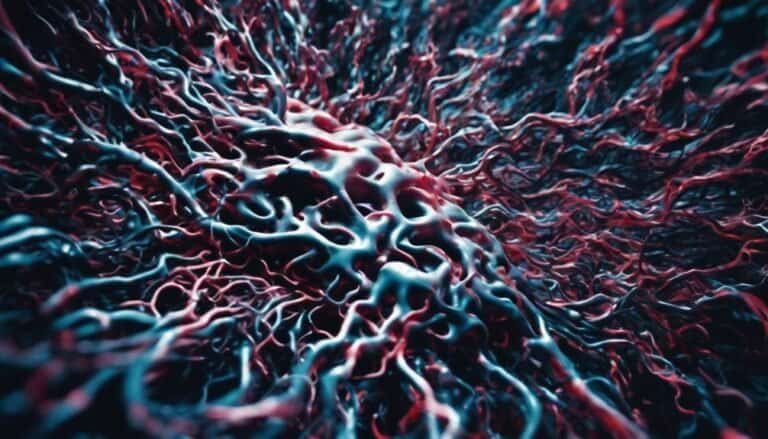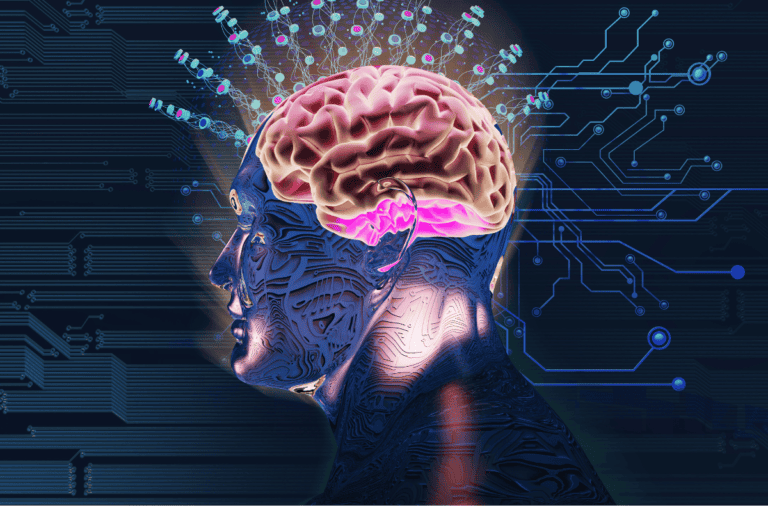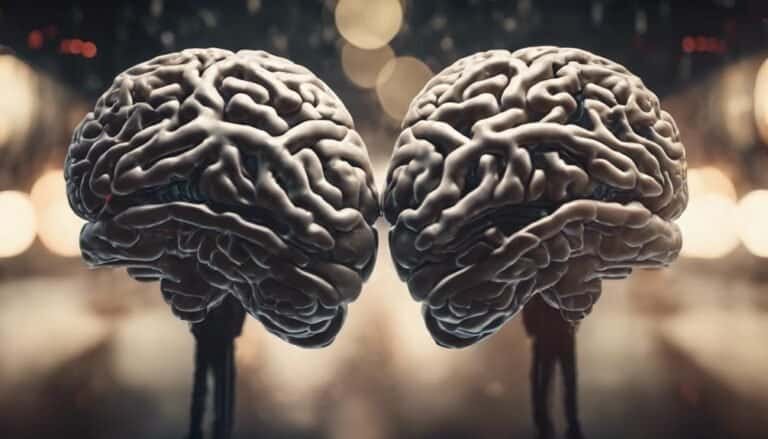Brain Mechanisms Behind Habit Formation
Have you ever pondered why habits seem so hard to break? Understanding the intricate brain mechanisms that underlie habit formation can shed light on this common conundrum.
By exploring the neural pathways involved, the role of neurotransmitters like dopamine, and the concept of the habit loop, you will gain valuable insights into how habits are formed and maintained.
This exploration not only offers a glimpse into the fascinating world of neuroscience but also provides practical implications for shaping our daily behaviors.
Key Takeaways
- Habit formation involves triggers and rewards linked to neural pathways.
- Neural connections strengthen with repeated behaviors, forming efficient pathways.
- Dopamine's role in reward processing and motivation reinforces habitual behaviors.
- Understanding the habit loop and emotional triggers is crucial for habit formation.
The Basics of Habit Formation
How do habits form in the brain and why are they so difficult to break?
Habit formation is a complex process that involves habitual triggers and reward systems within the brain. When you repeatedly engage in a specific behavior in response to a particular cue or trigger, neural pathways associated with that behavior are strengthened. These triggers can be internal, such as emotions or thoughts, or external, like a specific time of day or a visual cue. As you continue to respond to these triggers, the brain begins to associate the behavior with a sense of reward or pleasure, often releasing neurotransmitters like dopamine that reinforce the habit.
The reward systems in the brain play a crucial role in solidifying habits. When you perform a habit that leads to a positive outcome, such as eating a sugary snack when stressed, the brain registers this as a rewarding experience. Over time, the brain learns to anticipate this reward, making it increasingly difficult to break the habit loop. Understanding how habitual triggers and reward systems function in the brain can provide insights into how habits are formed and maintained, shedding light on the challenges of breaking them.
Neural Pathways Involved in Habits
As habits form and strengthen in the brain through repeated engagement with specific behaviors and triggers, the neural pathways involved play a crucial role in solidifying these habitual patterns. Neural connections are at the core of habit formation, with the brain creating pathways that become more efficient as behaviors are repeated. These pathways are like well-trodden paths in a forest, becoming easier to navigate with each pass. Through a process known as neuroplasticity, these neural connections are strengthened, making it easier for the brain to automatically engage in the habitual behavior in response to familiar triggers.
The development of habitual patterns relies on the communication between different regions of the brain, particularly those involved in decision-making, reward processing, and motor control. As habits become more ingrained, these neural connections become more robust, leading to a decrease in conscious effort required to perform the behavior. Understanding the intricate neural pathways involved in habit formation provides valuable insights into how behaviors become automatic and how they can be modified or broken.
Role of Dopamine in Habitual Behaviors
Dopamine plays a pivotal role in shaping and reinforcing habitual behaviors through its influence on neural reward pathways in the brain. Dopamine regulation impacts habit formation significantly.
Here are three key points to help you understand the role of dopamine in habitual behaviors:
- Reward Processing: Dopamine is involved in processing rewards and pleasure. When you engage in a habitual behavior and receive a reward, dopamine is released, reinforcing the habit.
- Learning and Memory: Dopamine helps in learning and memory formation, making it easier for habits to form and persist over time. The more dopamine is released during a habit, the stronger it becomes.
- Motivation and Habitual Reinforcement: Dopamine is linked to motivation. It drives you to repeat behaviors that lead to rewards, strengthening the habit loop and leading to habitual reinforcement.
Understanding how dopamine influences habitual behaviors sheds light on the neural mechanisms behind habit formation and the role of rewards in shaping our actions.
Habit Loop and Cue-Routine-Reward
Examining the intricate relationship between cues, routines, and rewards illuminates the fundamental structure of the habit loop. Habitual triggers, such as specific times of day or emotional states, act as cues initiating a habitual behavior. These triggers activate neural pathways associated with the routine, leading to the performance of the habit. Once the routine is completed, the brain anticipates the reward, reinforcing the habit loop. This reinforcement is mediated by the dopaminergic system, a key player in reward pathways.
Understanding the habit loop is crucial for comprehending how habits are formed and maintained. Cues trigger automatic responses, which, when followed by a reward, strengthen the habit loop. The brain's ability to associate cues with specific routines and the subsequent rewards plays a significant role in habit formation. Neuroimaging studies have shown that habitual behaviors involve distinct brain regions, including the basal ganglia and prefrontal cortex, which work together to execute routine behaviors in response to habitual triggers. By unraveling the mechanisms underlying the habit loop, researchers can gain insights into how habits shape our daily lives.
Neuroplasticity and Habitual Actions
The formation of habitual actions is intricately linked to the concept of neuroplasticity, highlighting the brain's remarkable ability to adapt and reorganize neural pathways based on repetitive behaviors. Neuroplasticity refers to the brain's capacity to rewire itself in response to learning and experience. When it comes to habitual actions, this phenomenon plays a crucial role in solidifying routines and behaviors over time. Understanding neuroplasticity implications in habit formation can provide insights into how habits are formed and maintained in the brain.
Neuroplasticity and Habitual Actions:
- Neural Rewiring: Through neuroplasticity, the brain can create new connections between neurons, strengthening pathways associated with habitual actions.
- Behavior Modification: Neuroplasticity allows for the modification of behaviors by reshaping neural circuits, making it possible to introduce and reinforce new habits.
- Habit Reversal Techniques: Leveraging neuroplasticity, habit reversal techniques can be employed to break existing habits by encouraging the brain to establish alternative pathways for different behaviors.
Impact of Emotions on Habits
Emotions play a crucial role in shaping habits. They influence the initiation, maintenance, and reinforcement of habitual actions. Research suggests that emotional triggers can significantly impact the formation and strength of habits, often leading to automatic and repetitive behaviors.
Understanding how emotions interact with habit formation can provide valuable insights into behavioral patterns and interventions aimed at habit modification.
Emotions Influence Habit
Influencing habitual behaviors, emotions play a significant role in shaping and reinforcing our daily routines. Emotion regulation is crucial in habit formation, as it impacts how habits are developed and maintained.
Here's how emotions influence habits:
- Behavioral Triggers: Emotions act as triggers that initiate habitual behaviors in response to specific emotional cues.
- Emotional Responses: The emotional responses linked to a habit influence its strength and likelihood of repetition.
- Reinforcement Mechanisms: Positive emotions associated with a habit can reinforce the behavior, making it more ingrained over time.
Understanding how emotions influence habits can provide insights into effectively managing and altering our routines for better outcomes.
Emotional Triggers in Habits
Emotional cues act as pivotal triggers in shaping and perpetuating habitual behaviors, exerting a profound impact on the formation and maintenance of routines. These emotional triggers play a crucial role in the habit loop, a neurological pattern that governs habit formation.
When a habit is triggered by an emotional cue, it sets off a sequence of actions: a cue triggers a routine, leading to a reward, which in turn reinforces the habit loop. Psychological influences, such as stress or pleasure, can intensify the emotional response to a cue, making the habit more ingrained.
Understanding the role of emotional triggers in habit formation can provide insights into how habits are developed and sustained, offering opportunities for targeted interventions to modify or replace unwanted habits.
Habit Formation in the Brain
Habit formation within the brain involves the intricate interplay of neural circuits and neurotransmitter systems. When a habit is formed, it becomes ingrained in the brain through various mechanisms that facilitate the automation of behaviors. Here are some key aspects of habit formation in the brain:
- Memory consolidation: The process of habit formation relies on the consolidation of memories in specific brain regions, such as the hippocampus and the prefrontal cortex. These regions work together to encode and store information related to the habit, allowing it to become more automatic over time.
- Neurotransmitter effects: Neurotransmitters, such as dopamine and serotonin, play a crucial role in habit formation. Dopamine, for example, is involved in reward processing and reinforcement learning, which are essential for shaping habitual behaviors. Serotonin, on the other hand, influences mood and motivation, impacting the likelihood of habit formation.
- Neural plasticity: Habit formation is also linked to neural plasticity, the brain's ability to reorganize itself by forming new neural connections. This process allows habits to become deeply ingrained in the neural circuitry, making them more resistant to change.
Habitual Behavior Modification Strategies
When it comes to modifying habitual behaviors, understanding the cue-response loop is crucial.
By identifying the triggers that lead to the habit, you can then implement behavior replacement techniques to redirect the behavior.
Utilizing these strategies can effectively reshape ingrained habits, leading to lasting behavior change.
Cue-Response Loop
The Cue-Response loop forms a crucial component in understanding habitual behavior modification strategies. This loop involves the intricate interplay between cue response dynamics, neural plasticity, habitual actions, and emotional triggers.
Here's how it works:
- Cue Response Dynamics: Cues in our environment trigger automatic responses in the brain, leading to habitual actions.
- Neural Plasticity: The brain's ability to rewire itself based on repeated behaviors reinforces these habits through changes in neural connections.
- Emotional Triggers: Emotions play a significant role in forming habits, as they can act as potent cues that prompt specific responses.
Understanding these aspects of the Cue-Response loop is crucial for modifying habits effectively and promoting behavior change.
Behavior Replacement Techniques
Utilizing behavior replacement techniques involves implementing structured interventions to modify established habitual actions effectively. Mindful awareness plays a vital role in behavior change by helping individuals recognize the triggers that lead to unwanted habits.
By fostering self-control, individuals can actively engage in habit reversal, substituting negative behaviors with positive ones. Research suggests that habit reversal techniques, such as competing responses that are incompatible with the habit, can aid in breaking the cycle of automatic behavior.
Through the conscious effort of identifying cues and implementing alternative responses, individuals can rewire their brain's habitual pathways. This process requires dedication and consistency but can lead to lasting changes in behavior patterns.
Implications for Daily Life
To effectively integrate new habits into your daily routine, understanding the underlying brain mechanisms is crucial for long-term success. Research on habit formation can provide valuable insights that can be applied to your daily life.
- Behavior Change: By understanding how habits are formed in the brain, you can effectively implement behavior change strategies. For example, knowing the role of cues and rewards in habit formation can help you design a plan to replace old habits with new, healthier ones.
- Habit Reversal: Learning about habit reversal techniques can be beneficial in breaking unwanted habits. Utilizing strategies such as identifying triggers and implementing competing responses can aid in reversing entrenched habits.
- Consistency: Consistency is key in habit formation. Understanding the brain mechanisms behind habits can help you stay motivated and consistent in your efforts to establish new behaviors in your daily life.
Conclusion
You have learned about the brain mechanisms behind habit formation, from neural pathways to the role of dopamine. Understanding the habit loop of cue-routine-reward and the impact of emotions on habits can help you modify your behaviors.
Just like how a river carves its path through the land, your brain can create new neural pathways through neuroplasticity to forge new habits. Harness the power of your brain to make positive changes in your daily life.

